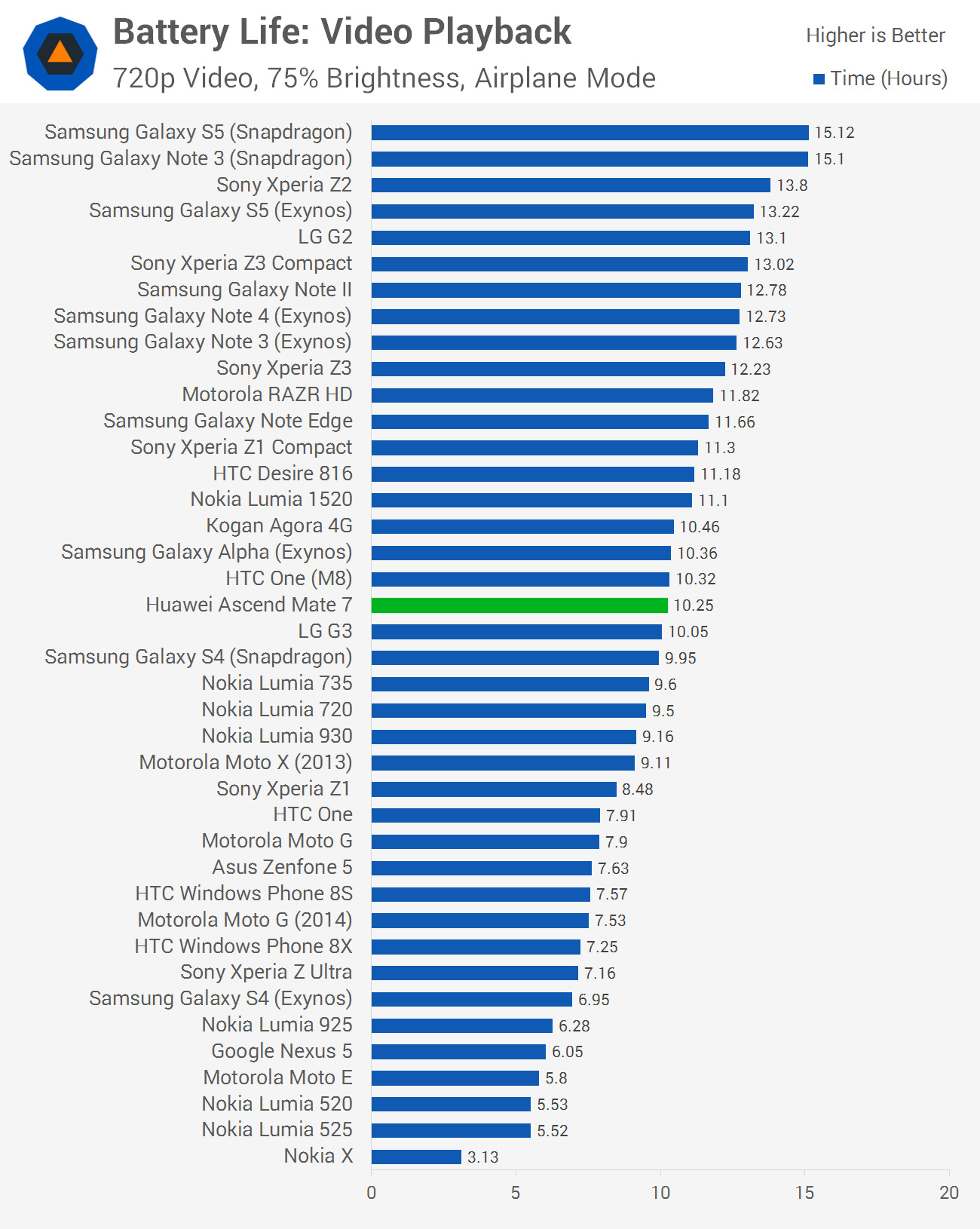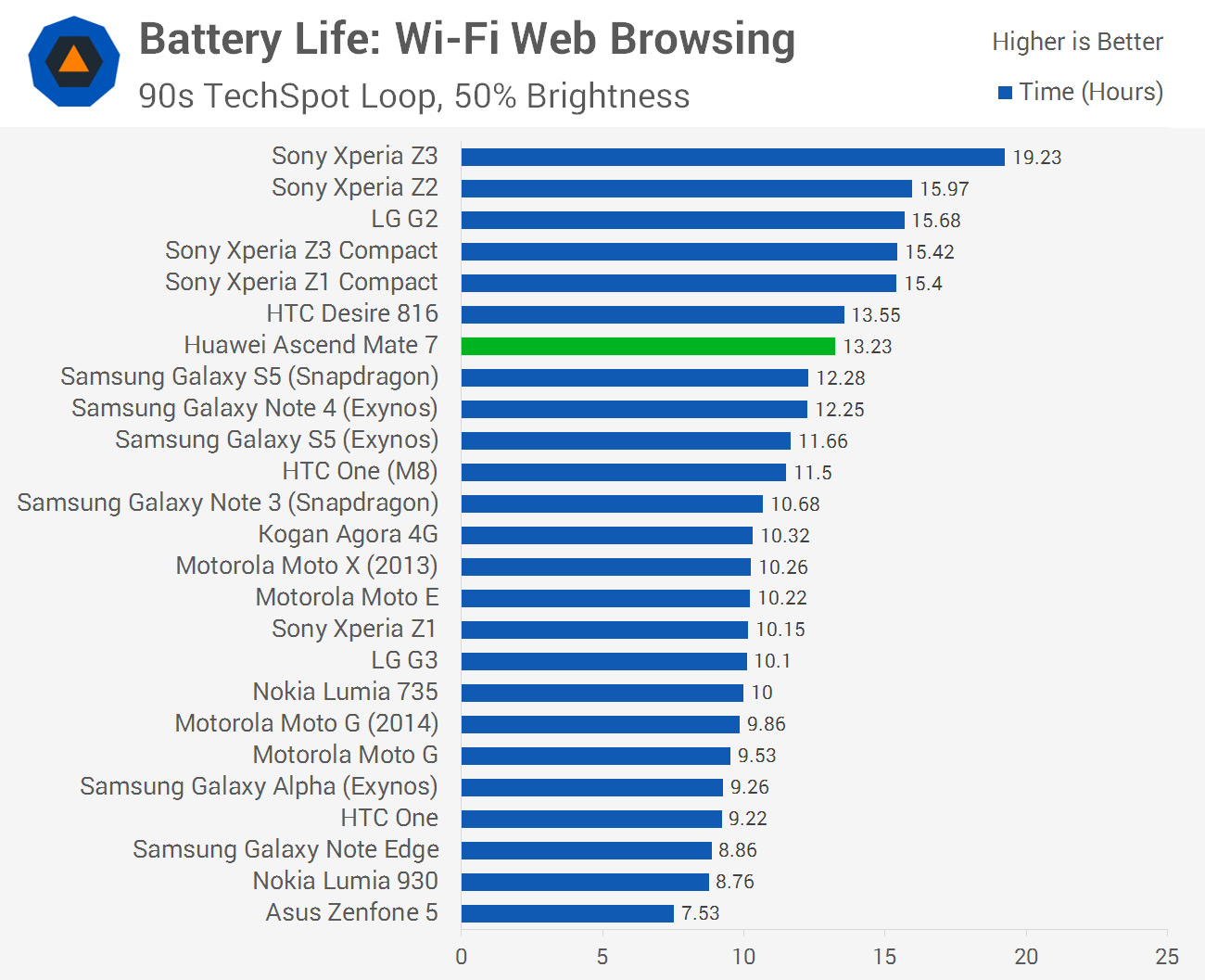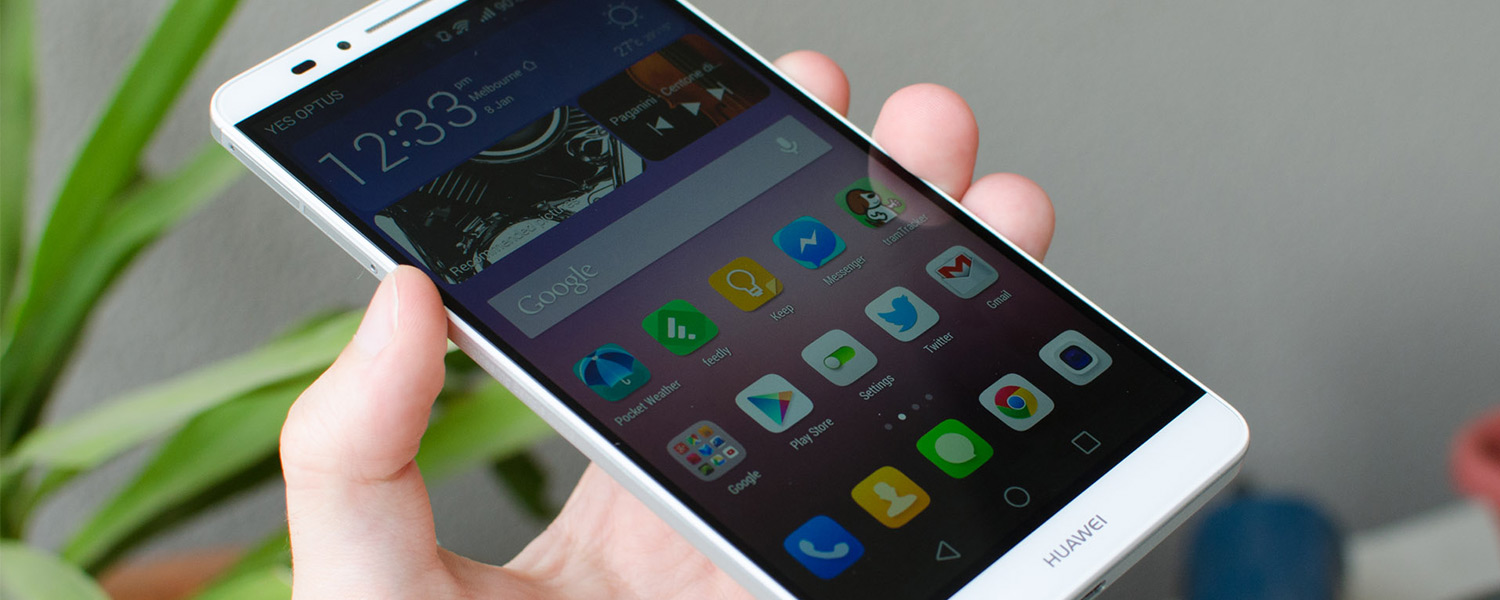Battery Life
The Ascend Mate 7 comes with a monster internal battery: 4,100 mAh at 3.8V for a whopping 15.58 Wh capacity. With this sort of battery, you'd expect generally very good battery life despite the screen size, and subjectively this is what I achieved. The handset tends to be an excellent conserver of battery life, especially when displaying static content, running low-power apps or waiting around in standby mode.
The battery life could easily be extended through the use of the variety of battery saver options, including the abilities to shut off wireless access to some apps, and restrict their use of background CPU cycles. Tuning the device perfectly could see you achieve great battery life figures in general usage, though I achieved pretty good results without using these features.



Out of the battery results above, the most impressive result is on Wi-Fi, where the Ascend Mate 7 lasts a very decent amount of time. It doesn't reach the same heights as the Sony Xperia line, but the massive screen does consume significantly more juice when reading web pages.
LTE and video playback results are less impressive. It's clear that the modem and video decoding block in the Mate 7 aren't as efficient as implementations by Qualcomm and other SoC vendors, which results in worse performance than these devices, even with a massive battery.
Subjectively the battery life I achieved with the Mate 7 felt better than these results conveyed, and that's probably due to great standby battery consumption. Having such a massive battery powering just the SoC and other components (with the display turned off) leads to great battery life in these situations.

Charge time wasn't so great from a standard 10W charger, although this is mostly due to slow charging going from 90% to 100%, and the size of the battery. Using the included quick charger should see significantly better results, especially in the first 50-60% of charging.

